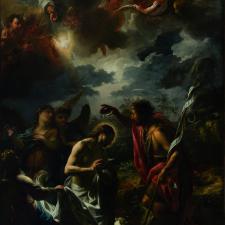The exhibition is one of the main projects of Pilsen – the European Capital of Culture 2015.
The exhibition Nobility & Piety. Baroque Art in the Pilsen Region and West Bohemia is the first comprehensive presentation of 17th and 18th century fine art in West Bohemia. It features all artistic disciplines, including wall paintings and architecture (however, the latter only in the form of design drawings, historical plans and illustrations).
Artistic value and demonstrable connection to the historical region and protagonists of the local art scene were among the crucial criteria for the selection of exhibits. This includes artists as well as their patrons and benefactors; superiors of wealthy monasteries of Plasy, Kladruby, Teplá and Chotěšov, aristocratic families, such as Kokořovci, Lažanští or the Counts of Vrtba, and to a lesser extent, burghers and the lower clergy. The phrase Nobility and Piety used in the title of the exhibition suggests a unique blend of the ambitions of confident art patrons and their spiritual needs, which were an integral part of their lifestyle with its high aesthetic demands.
Due to its particular position within the Czech lands, the region was a sought-out place for artists from Prague and neighboring Bavaria; it gave many the opportunity to rise to the top of their creative performance. We must also emphasize the significance of small masters, because they are the ones who ultimately render the regional artistic work distinctive by adopting and acquiring the high style from the most prominent artistic centers and great personalities and its subsequent development.
Baroque in West Bohemia is viewed as an artistic epoch throughout its whole duration: from its gradual infiltration in the 17th century through to its peak in the first half of the 18th century and the final stage in the second half of the 18th century. However, the conception of such a development process is not derived from the transformation of stylistic forms but rather from changes of social conditions that significantly affected the development of fine arts in this region.
The Gallery of West Bohemia in Pilsen had the opportunity to acquire for the exhibition such artistic gems as the tortoiseshell altar from Plasy, the complete set of Lazar Widemann’s alabasters sculpted for Count Jan Josef junior of Vrtba, Petr Brandl’s exquisite Baptism of Christ from Manětín, and the altar painting by Jan Kryštof Liška for the parish church of St. Wenceslas in Plasy, which was considered lost for many years. Last but not least, we are able to present a portrait of Abbot Maurus Fintzguth, the builder of the monastery church in Kladruby, whose looks were not known up until now.
On the occasion of the exhibition a homonymous monograph on the phenomena of Baroque in West Bohemia was published. The exhibition and publication project was executed in collaboration with the Institute of Art History of the Academy of Sciences of the Czech Republic.

|
|








